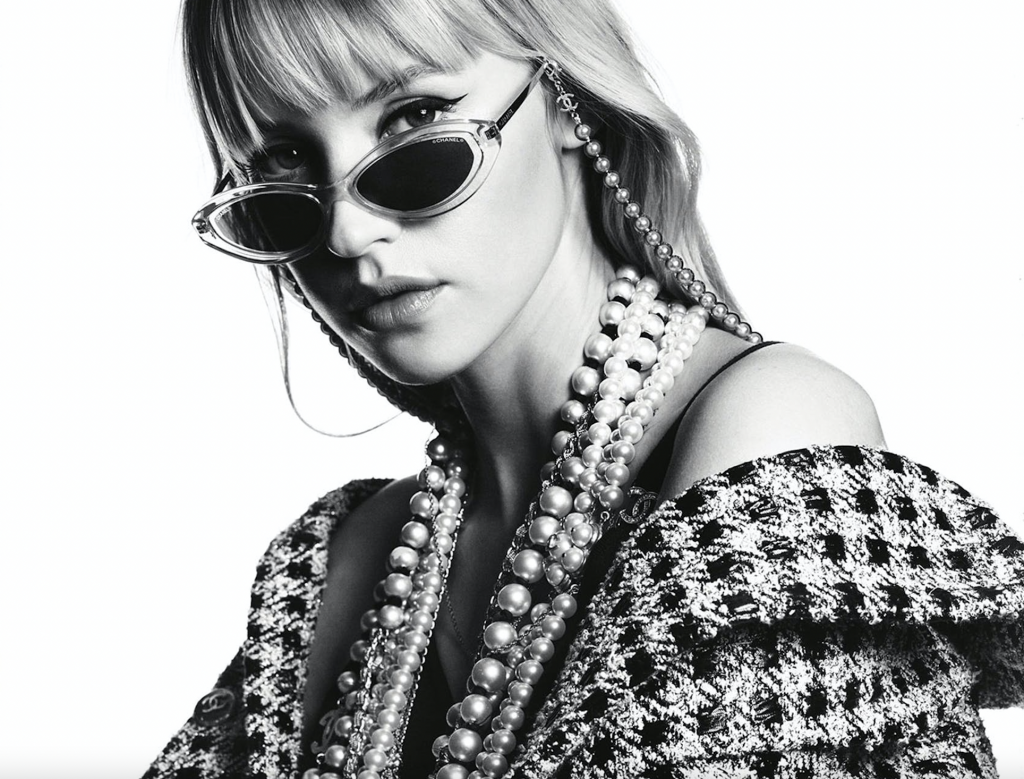The workings of the market for licensed goods have been influx in recent years, as at least some luxury names have sought to bring operations in house or at least closer to come (via joint ventures, for example) in a larger quest for greater control over manufacturing and distribution. Hardly a little-known endeavor, the fashion industry is inundated with the byproducts of trademark licensing (i.e., the practice by which a trademark owner, the “licensor,” permits another party, “the “licensee,” to use its trademark(s) in connection with specific products or services), whether it be branded sunglasses, best-selling fragrances, jewelry collections, or designer cosmetics.
Over the years, well-established luxury names, having built their businesses on garments and leather goods, have looked to the likes of Coty, L’Oreal, Puig, Perfumania, and Inter Perfumes to produce trademark-bearing fragrance and beauty collections, and/or to Euroitalia, Marcolin, Marchon, Safilo, and Essilor-Luxottica in order to offer up logo-bearing eyewear, thereby enabling an expansion their operations into new product categories and geographic markets with greater ease than if they were to do so in-house. These more accessible offerings ensure that luxury brands not only reach new demographics of consumers, but they also allow them to boost their bottom lines in the process.
As a whole, the size of some of fashion’s most notable licensing deals – and the categories they fall into – are no small matter, both in terms of the revenue generated by the licensed goods, themselves, and the lump sum and sales-based royalties amassed in connection with such deals. Back in 2017, for example, Italian eyewear company Safilo Group maintained licenses to make, market, and sell eyewear for a handful of LVMH Moët Hennessy Louis Vuitton-owned brands that were worth an estimated $366 million. As of 2019, when LVMH revealed that it would not renew its licensing deal with Safilo for Dior eyewear, the sales of eyewear resulting from the parties’ deal, alone, accounted for nearly 15 percent of Safilo’s $1.1 billion in annual revenue.
More recently, licensed retail sales in the U.S. and Canada reached an estimated $114 billion in 2019, according to TLL’s Annual Licensing Business Survey, with “apparel-based fashion brands seeing the greatest dollar increase among all sub-types tracked [in the survey].” TLL projected steady growth in the licensed apparel, footwear, and beauty categories for 2020 and beyond, but such projections were published in a pre-COVID world, raising the questions of where such mega-deals currently stand as a result of enduring pandemic-related impacts on the market and what can be expected in the future.
“There are certainly product and services categories that are not doing well during the pandemic,” Brandgenuity partners Adina Avery Grossman and Louis Drogin, and Coty, Inc. Global Deputy General Counsel Joseph Conklin asserted in an International Trademark Association panel focusing on COVID’s implications for licensing relationships. However, “There are many categories that are not only doing well, but growing” in light of the global health pandemic. (Sales of all kinds of home products and athleisure clothing, for example, boomed during the height of pandemic lockdowns, with Lululemon’s shares hitting an all-time high in May, per Bloomberg, as “Wall Street bet that those working from home would purchase more athleisure wear.” Interest in other types of apparel, such as “going out” clothing, and makeup have since started picking up again according to recent reports.)
As for companies in less pandemic-friendly categories, Grossman, Drogin, and Conklin say that retail entities have been “gearing up” for rebounds in 2021 and beyond, particularly as much of the marketplace “looks ripe for a rebound in light of the vaccine news that recently came out.” That is likely to bring a slew of new licensing deals to the forefront, and all the while, “more specificity and breakdown of the licensed categories and sub-categories.”
While lucrative licensing deals are expected to endure post-COVID, the model will almost certainly get an overhaul – from the opportunities for brand licensors and licensees to the terms of the licensing deals, themselves. For instance, they expect licensing to see “much greater scrutiny and negotiation activity around the so-called ‘boilerplate’ provisions.” This is bound to include an emphasis on “force majeure [terms], choice of law provisions, frustration or purpose and/or impossibility of performance standards, insurance, letter of credit, jurisdiction for disputes, and limitation caps on damages.” The same post-pandemic shifts are also likely to push companies to look to arbitration on a more regular basis, not only to avoid costly court proceedings, but also to keep disputes behind closed doors, as distinct from the public-facing nature of litigation.
At the same time, it is worth noting that at least some companies will likely look to refashion their licensing operations, and follow in the footsteps of Gucci’s parent company Kering – which announced in the fall of 2014 that it would create an in-house eyewear division in order to tighten control over the business (and the revenues generated) and would gradually walk back on all of it licenses with third parties, such as Safilo – and LVMH, which formed a joint venture with eyewear maker Marcolin in 2017.
In light of the sweeping supply chain disruptions that have come hand-in-hand with the pandemic, and given a larger trend of the industry’s biggest groups consolidating in order to bring everything they can under their own roof – from suppliers to their digital operations, licensing very well may look different when the dust finally settles on COVID. In much the same way that the pandemic has accelerated other, existing developments (from the adoption of e-commerce to the enduring industry-wide M&A transactions by carious out by well-established groups, such as LVMH, which acquired Tiffany & Co. late last year), there is a good chance that the pandemic pushes well-equipped companies away from the time-tested licensing model towards their own in-house operations (or at least, more closely controlled joint ventures) to ensure a firmer grip on the supply chain logistics at play and the end products.
This is likely to be compounded further by the fact that at least some luxury brands are looking to shore up their positioning in the market, including by doing away with many of their existing licensing deals (and in some cases, shifting away from wholesale operations in favor of direct-to-consumer endeavors). Former Ferrari CEO Louis Camilleri revealed in late 2019, for example, that the Italian automaker was planning to significantly revamp its licensing strategy, one that has enabled it to transform the luxury appeal of its name into lucrative deals with third-parties, such as Tod’s and Oakley, which readily stamp the Ferrari name and prancing horse logo on leather loafers and sunglasses. “Some of the products [that Ferrari currently offers] do not fit our brand image and our luxury positioning,” Camilleri asserted at the time.
The automaker has since revealed that it will focus on fewer, more upscale partnerships, such as a lifestyle venture with Giorgio Armani, which is in the midst of a quiet makeover of its own, with Bernstein’s Luca Solca stating in a note recently that price increases at Armani “come as a result of incorporating adjacent lines like Armani Jeans and Armani Collezioni into the main collection and slowly elevating brand image as a result.”
Amid a reshuffling of the cards on the licensing front at the upper-end of the luxury totem pole, there are certainly luxury companies that will opt not to pull back on these types of licensing operations, namely, those that do not have the benefit of a joint venture arrangement or in-house manufacturing of traditionally licensed categories, and instead, will push into new categories for growth. Simultaneously, there is an increasing number of more mass-market fashion companies that are getting a new life thanks to licensing-centric deals; Barneys New York, Brooks Brothers, and other bankrupt names that have been bought up by Authentic Brands Group and co., come to mind. For these entities, agreements that establish clear rules on the expected quality of the products, the strategy for marketing and merchandising, the permissible points of distribution, and how the trademarks at issue will be used/presented are essential to maintaining the appeal of the brand names at play.
And beyond the purely legal considerations in the mix, brands should think strategically before they are tempted to pivot to new product categories or to new trade channels or territories, per Grossman, Drogin, and Conklin. “Does the brand fit with the contemplated new category? Are consumers likely to purchase the new product simply because it is branded with your trademark, despite how famous your trademark may be?” These are some relevant inquiries, as well as, “Is the pivot to the new product a short term initiative or a long term plan? Does the marketplace really need the new product or is there enough competition already present and your product is not distinguishable?”













